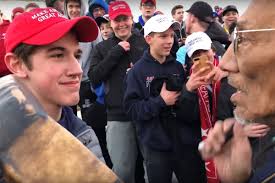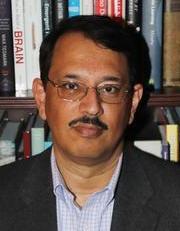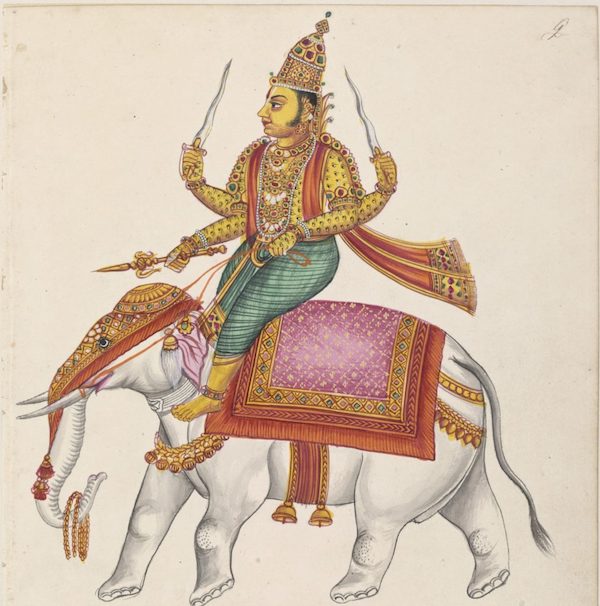This is a chapter from Major Amin’s history of the Sepoy Rebellion (“The Sepoy Rebellion Reinterpreted“). The formatting needs work, but I wanted to post it anyway just to give readers an idea of the kind of campaigning that took place in that region. For a quick overview of the entire rebellion, see here.
CENTRAL INDIA CAMPAIGN ; A SMALL AFFAIR APART FROM MUCH RHETORIC
Chapter Seven: The Central India Campaign 1857-1859
Maj (Retd) AGHA HUMAYUN AMIN
The Central India Campaign was fought over the widest area in terms of length and breadth as compared to all the other campaigns of 1857. It took the British longer in terms of time to suppress the rebellion in Central India as compared to all other regions involved in the rebellion. Yet the Central India Campaign in terms of forces involved and casualties suffered was only a very minor campaign of the Sepoy Rebellion. The smallest number of units of Bengal Army were actively involved in this campaign, as far as the Sepoys were concerned. The conflict in Central India was a minor one because nothing strategic was at stake. The Bengal Army before the outbreak of the rebellion had a sizable strength in Central India in terms of number of units. However as soon as these units rebelled most of them marched towards Delhi because Delhi was the most popular point of concentration of the Bengal Army Rebels. Some units however did march to Cawnpore, Kalpi or to Banda. Banda was the hot choice because of the prospects of looting. The Nawab of Banda who had rebelled was active in looting and his leadership inspired many rebels to go to Banda. Three units of infantry entered Central India because of geographical compulsions. These were led by the indomitable Hindu Rajput Talukdar Kanwar Singh and came to Central India because they could not move to the north because of the Ganges River and because of proximity of European units who were marching on the main Grand Trunk Road from Calcutta to Benares.
The Central India Campaign however was significant because of presence of three charismatic figures who caused a lot of trouble to the British. There were the Rani of Jhansi a Hindu contemporary of Hazrat Mahal of Lucknow, Tantia Topi the only sepoy leader who executed an offensive plan of strategic level to sever the British Army’s communications with Calcutta and Feroz Shah a Mughal Prince who fought valiantly and also later on managed to escape and survive the rebellion by almost twenty years. The Rani we admire because although a woman by sex she was more of a man than most of our worthy feudals whose grandsons later on became our Prime Ministers and Chief Ministers! Tantia Topi we admire because without any formal military education or background he did at least effectively and physically threaten the British communications. Something in which our Generals Rajinder Prasad and Nasir Ahmed Khan years later failed miserably despite possessing much more in terms of education, manpower and material superiority ! Feroz Shah we admire because despite being a Muslim he inspired many Hindus to fight for a just cause at a time when Muslims in Muslim majority areas were soldiering for a foreign nation ! After the failure of the rebellion he also made many attempts to convince Muslim Kings of “martial races” like Afghanistan or Iran to resist the British. But all praise to General Nott and Pollock, the lesson taught by them to the Afghans in 1842 in the Grand Bazar of Kabul was too hard to forget. And that handsome subsidy of Rs. 12 lakh the Afghan King was getting was so hard to refuse !!
INITIAL DEVELOPMENT OF TROOPS
Various Bengal Army troops and princely state contingents were present in Central India and Western Rajputana in 1857. We have included the following areas in Central India for the purposes of analysis / discussion:– (1) Central India Agency comprising various princely states in the area between Narbadda River and Jumna River. (2) The Southern and Eastern Rajputana area of Ajmer Jodhpur Tonk etc. (3) The Bundelkhand, Saugor and Narbadda territories. Rough deployment of various units and contingents was as following356 : a. Bengal Army Infantry:- (1) 12 NI -Wing each at Jhansi and Nowgong. (2) 15 NI -Naseerabad (3) 30 NI -Naseerabad (4) 72 NI -Nimach (5) 23 NI -Mhow (6) 31 NI -Saugor (7) 42 NI -Jubbulpur (8) 52 NI -Jubbulpur (9) 50 NI -Nagode b. Bengal Army Cavalry (1) 1 LC -Wing each at Mhow and Nimach. (2) 14 Irregular Cavalry – Wing each at Jhansi and Nowgong. (3) 3rd Irregular Cavalry- Saugor. c. Gwalior Contingent (8318 men) (1) Infantry-Seven Regiments at Gwalior, Goonah, Sipri, Nimach etc. (2) Cavalry-Two Regiments. (3) Artillery-Four Field Batteries and a Light Siege Train. c. Jodhpur Contingent. A Composite Force of infantry, cavalry and artillery comprising approximately three Troops of Cavalry, eleven Companies of Infantry, and two Nine Pounder Camel Guns stationed at Erinpura in Jodhpur State. Cavalry entirely Hindustani Muslim/Ranghar/Kaimkhani Muslim and eight Infantry companies out of the total entirely consisting of Hindustanis. d. Malwa Contingent. Similar to Jodhpur Contingent. e. Other Contingents. There were similar other but smaller contingents of other states like Jaipur State Troops and Kotah Contingent.
DEVELOPMENT OF THE REBELLION IN CENTRAL INDIA AND RAJPUTANA
On 28 May 1857 the sepoys at Nasirabad comprising of 15 and 30 NI regiments rebelled, killed their British officers and after plundering the town marched towards Delhi. In Central India the initial development of the rebellion was slower than Eastern Rajputana. Here on 9 June the Malwa contingent rebelled and on 14 June the Gwalior contingent rebelled at Gwalior and Sipri. The wings of 12 NI and 14 Irregular cavalry stationed at Jhansi and Nowgong rebelled on 6th and 9th June respectively. On 1st of July the Indore contingent rebelled. The Indore contingent was soon joined by the Bhopal contingent comprising mostly Pathans and some Hindustanis. However most of its Sikh troops who constituted a minority stayed loyal. The Begum of Bhopal like the Rani of Jhansi was a woman, but was made of the same passive fibre as most of the Muslim Hindu and Sikh Feudals of that era. Thus she stayed loyal to the British. The 23 NI and the wing of 1st Light Cavalry stationed at Mhow rebelled on 1st July and marched towards Gwalior on the Grand Trunk Road. They reached Gwalior on 31st of July 1857 and from here marched to Delhi via Agra. The 23 NI and 1st Light Cavalry sepoys played an important role in reviving the spirits of the Gwalior contingent troops who after their initial rebellion on 14 June had subsequently become very demoralized because of clever propaganda by their ruler the Sindhia who was secretly in League with the British at Agra. Another factor in the earlier demoralization of the Gwalior contingent troops stationed at Gwalior was the arrival of remnants of the 6th Infantry Regiment of Gwalior contingent who had earlier rebelled at Lalitpur and had joined the Nana Sahib at Cawnpore. These troops withdrew from Cawnpore to Gwalior after having been routed by General Havelock in July 1857. Anyhow after 31 July the Gwalior Contingent troops gained greater resolution, thanks to successful exhortation by the 23 NI and 1st Light Cavalry who stopped at Gwalior on their way to Delhi for a few days.
Meanwhile following was the situation in eastern half of Central India: – a. The 42 NI and 3rd Irregular Cavalry stationed at Saugor rebelled on 1st July. The 31 NI stationed at Saugor however remained loyal. The 3rd Irregular Cavalry and the 42 NI for some time marched around Saugor looting and plundering but finally they marched towards Banda which they reached around September 1857. Here they joined the Nawab of Banda who had declared himself independent in the aftermath of a rebellion led by sepoys of the detachment of 1st NI stationed at Banda on 14 June 1857. (Subsequently they went to Kalpi)
Prince Ferozeshah who had gone to Mecca for Haj in 1857 meanwhile was in Central India after returning via the port of Surat. Ferozeshah was in area inhabited mostly by Hindus and had no army. It is an irony of history that the two finest Muslim military commanders Hyder Ali and Tipu Sultan offered the toughest resistance to the British despite the fact that they were ruling a Hindu majority state. This clearly proves that it is not mere majority in population but superiority in terms of quality of leadership which is the deciding factor. On the other hand we see that many Muslim majority areas were rendered impotent merely because of absence of good leadership. Ferozeshah managed to reach Mandesar in Gwalior state territory with some followers. He was still wearing the ahram which pilgrims on Haj wear. He reached Mandesar on 26 August 1857. There was a detachment of Gwalior troops stationed here. These being mostly Hindus but from Northwest province immediately joined Ferozeshah and raised the standard of revolt in Mandesar ! Continue reading 1857: The Central Indian Campaign
 I’ll be interviewing my friend
I’ll be interviewing my friend 


